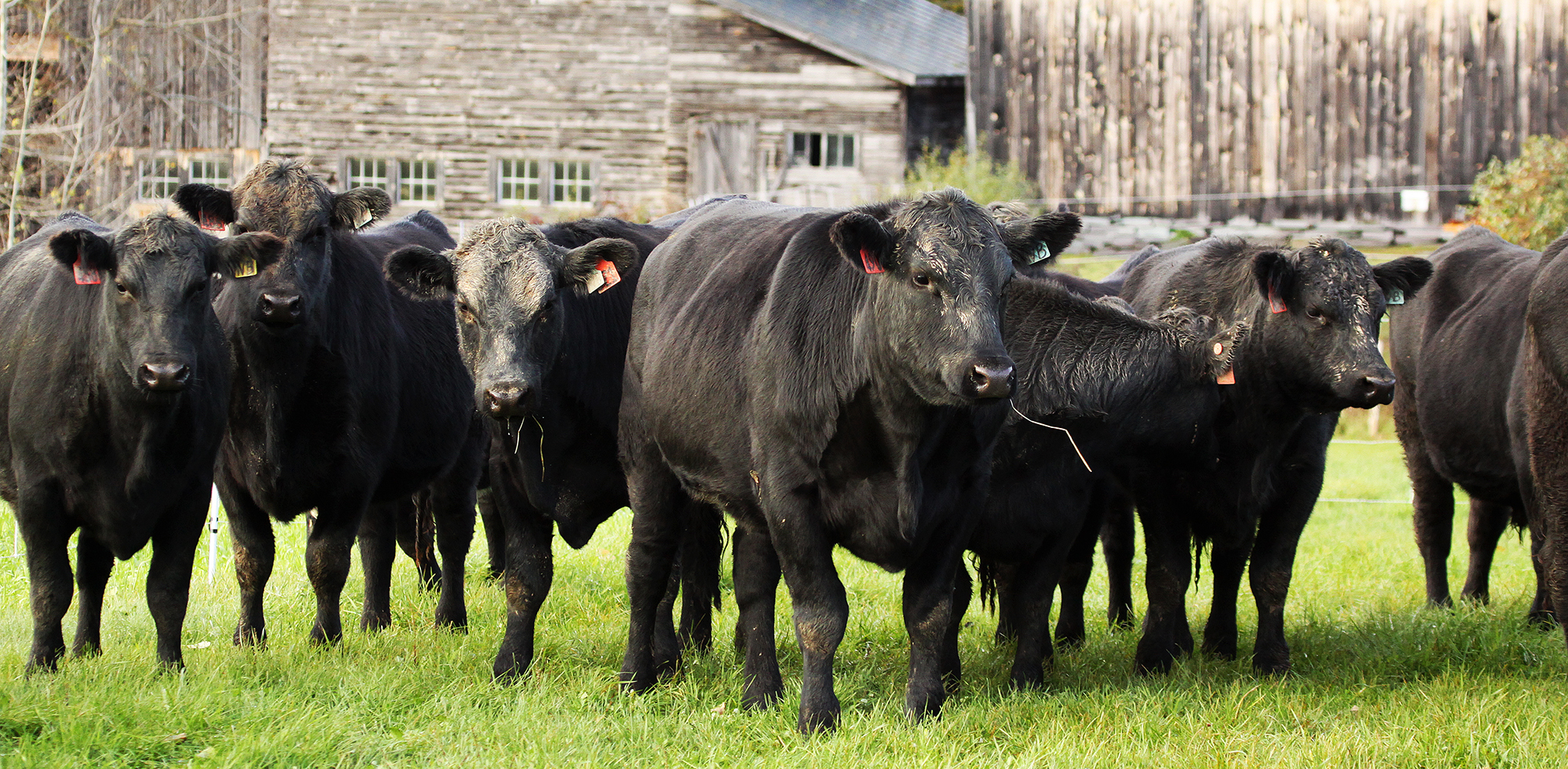THE Flavor of our beef: An eating experience
How does it taste? Our customers often say that they have never had better beef. For those that are familiar with USDA grades, most of our animals will produce a "choice" eating experience without necessarily looking "choice". Of note, the fat will be more yellowish both before and after cooking. The beef is consistently juicy and tender, but you still need to be careful to match the method of cooking to the cut of meat. Some will notice a richer fuller flavor and say that it is from the "grass" (good). Others have said that it does not taste "grassy" or "gamey" (bad). I personally think that it tastes sweeter, less acidic, or sharp. Kind of mellow. The fat is smooth and not as waxy.
There will be some variability between each animal and within the different cuts of each animal. We enjoy noticing the differences by season and the “terroir” of each serving. We believe the best and most responsible way to utilize beef is to eat the entire animal. That way you get a balance of fat and lean, tough and tender as well as much more of the nutrient packed components that you may not get in your burger, roast, or steaks. (Think simmering soup bones and braising shanks)
HOW WE FINISH
Finishing cows on nutritious pasture is perhaps the most important aspect of raising cattle to create delicious beef. To us, finishing means the animal has slowed skeletal maturation and has packed on near maximal muscle mass and has begun to lay down a covering of fat. The timing of this will vary quite a bit even among otherwise similar animals. Getting this right is good for all of us. We want to convert all that solar energy into healthy edible beef. I specifically look for animals with more rumen capacity to allow increased intake of forages. We consistently move animals through pasture that has the right balance of protein, sugars, and fiber to get steady weight gain.
MARBLING: FAT MATTERS
With the exception of the Wagyu breed, most beef animals need 3 things to maximize marbling (this farmer's opinion): 1) adequate energy, 2) maturity, 3) fat covering on carcass. Genetics still play a large role here, which is one of the reasons I stick with Angus-type animals. I believe that a steady supply of high energy forage for the longest period possible ensures that there are excess calories for the animal to deposit fat in the meat in the form of visible marbling. However, to maximize healthy fat, we need highly digestible fiber to be a major component of our forage. This is a fast moving target as grass quickly matures at times and can go from great to poor quality in days. During this time period, paying attention to detail and intervening with as much finesse as required pays major dividends. This is why good quality grass finished beef is expensive and rarely produced on a large scale.
Processing
Stress can affect the flavor of the beef, so we take great care in our final steps leading to slaughter. We practice low stress handling and only have 20 min to get to the processing facility. This is a locally owned business and we've been happy with their quality. They are animal welfare approved (AGW). They are relatively small and have the capacity to dry age our animals for 10-14 days. This is why that fat covering is important. The fat prevents excess drying and spoilage while the meat ages and tenderizes. We work closely with the butchers to ensure animal is processed to our and our customer's specifications. Meat is vacuum sealed and frozen.




